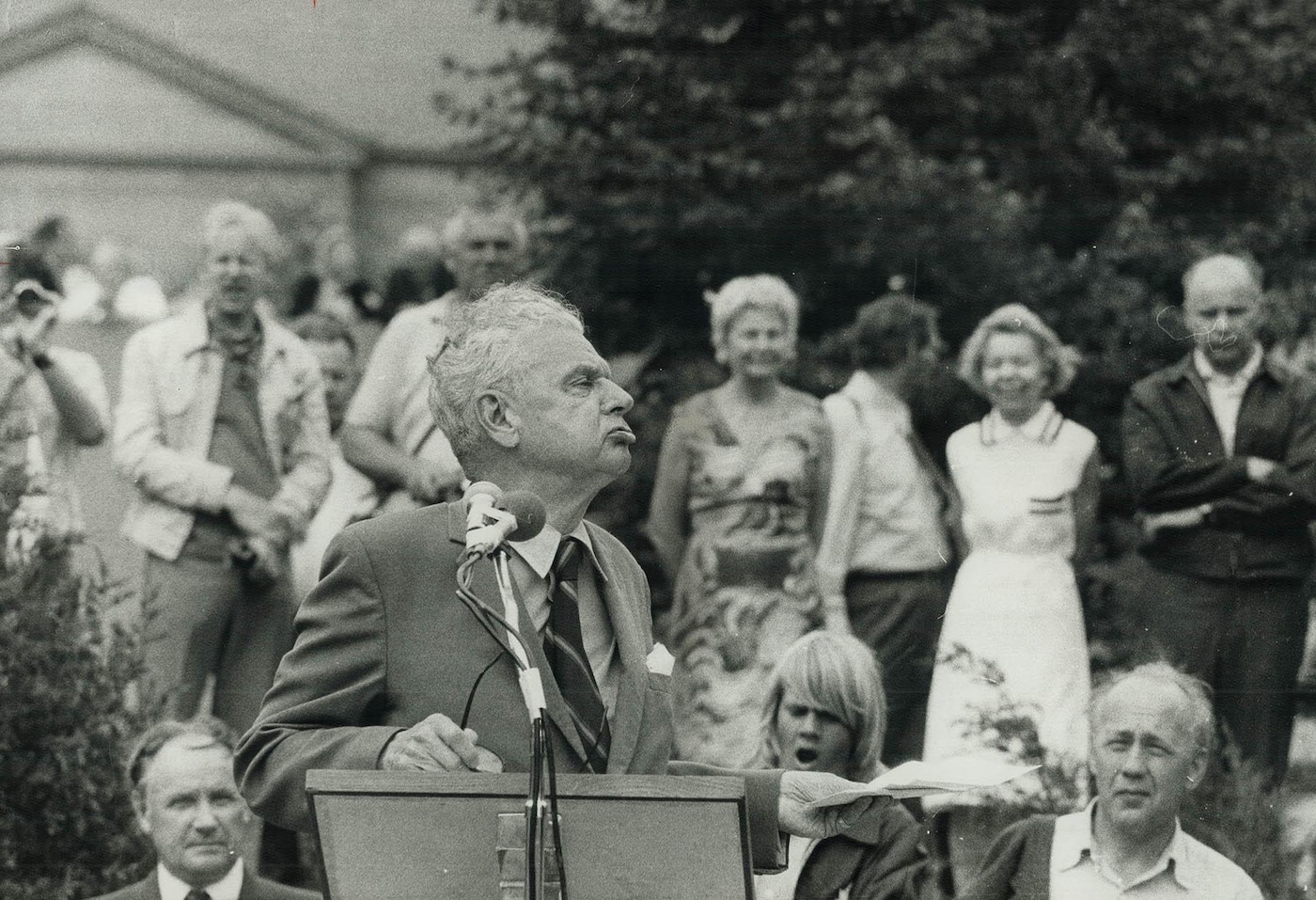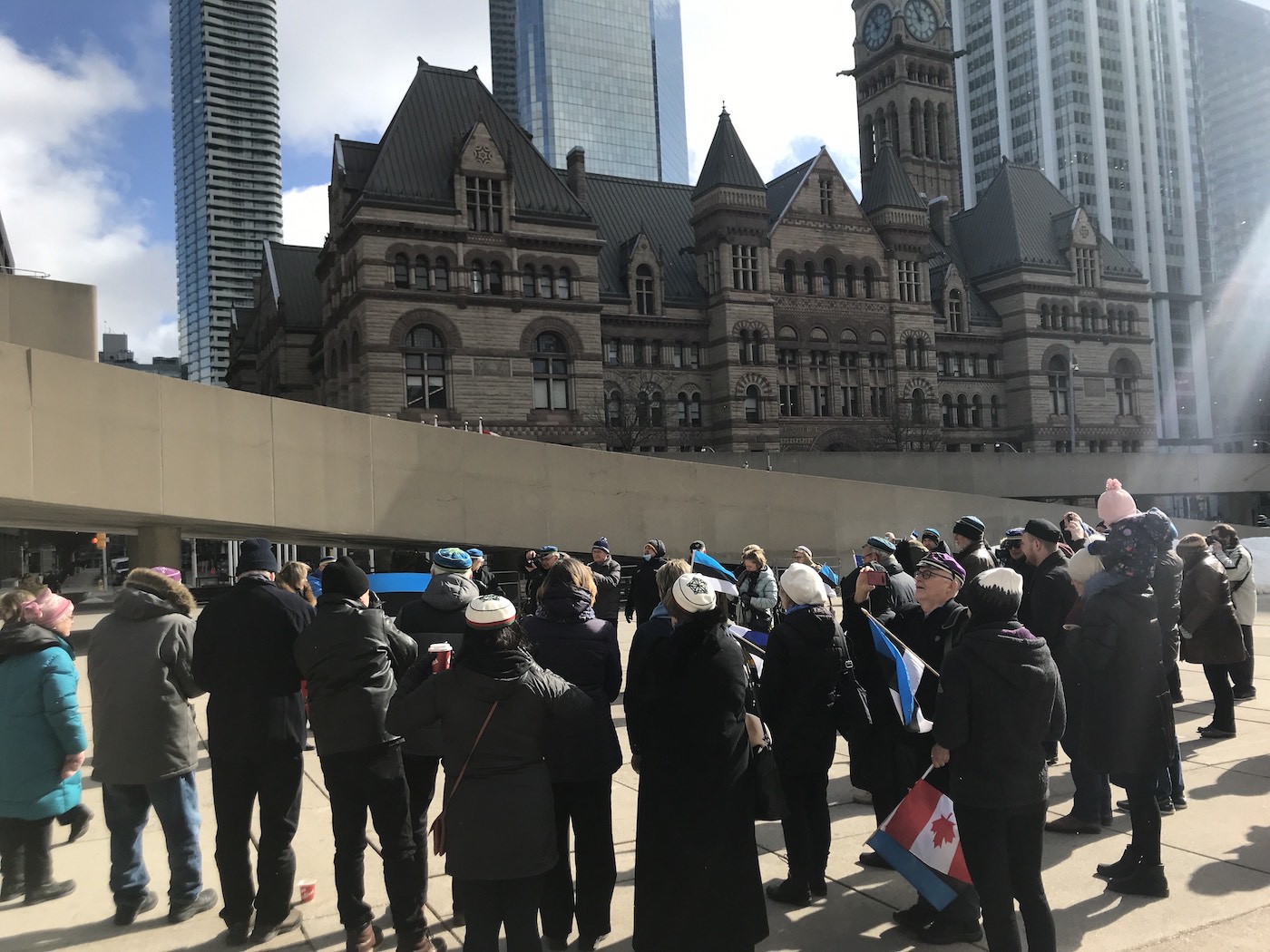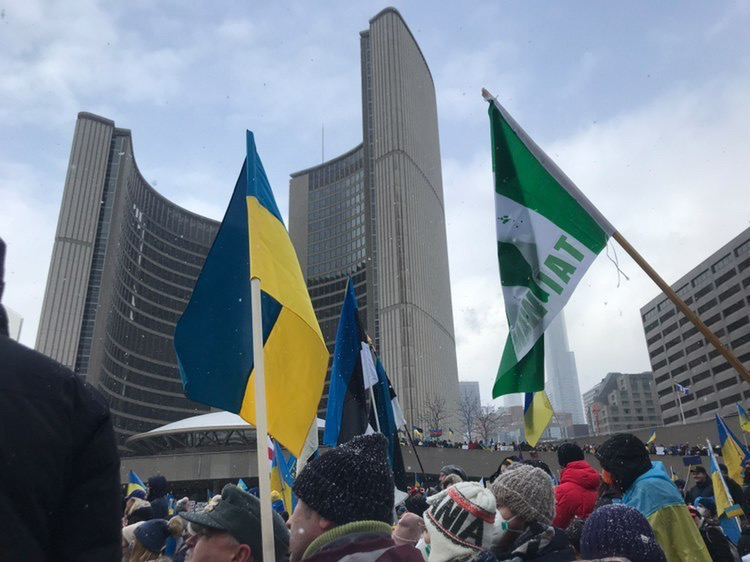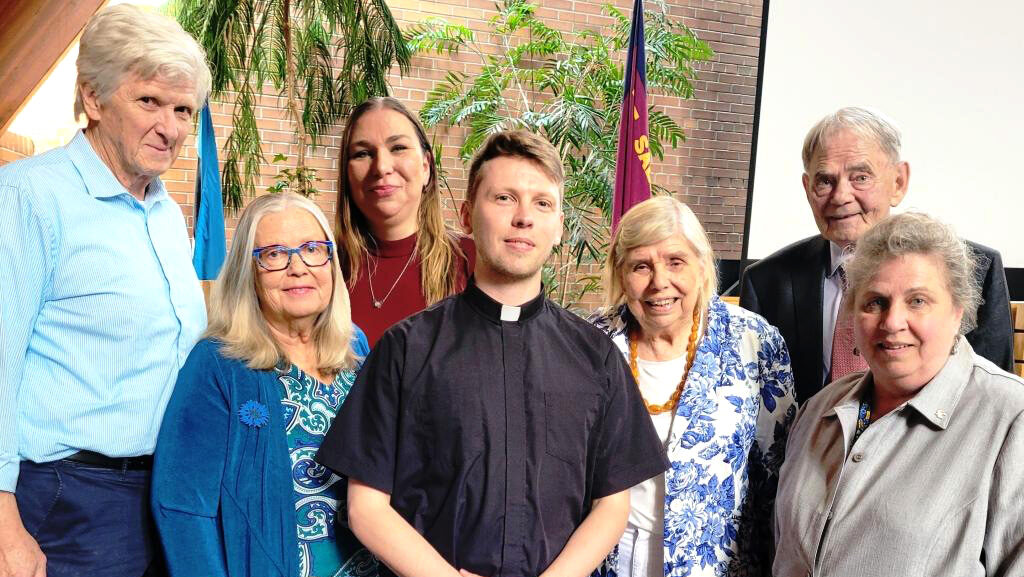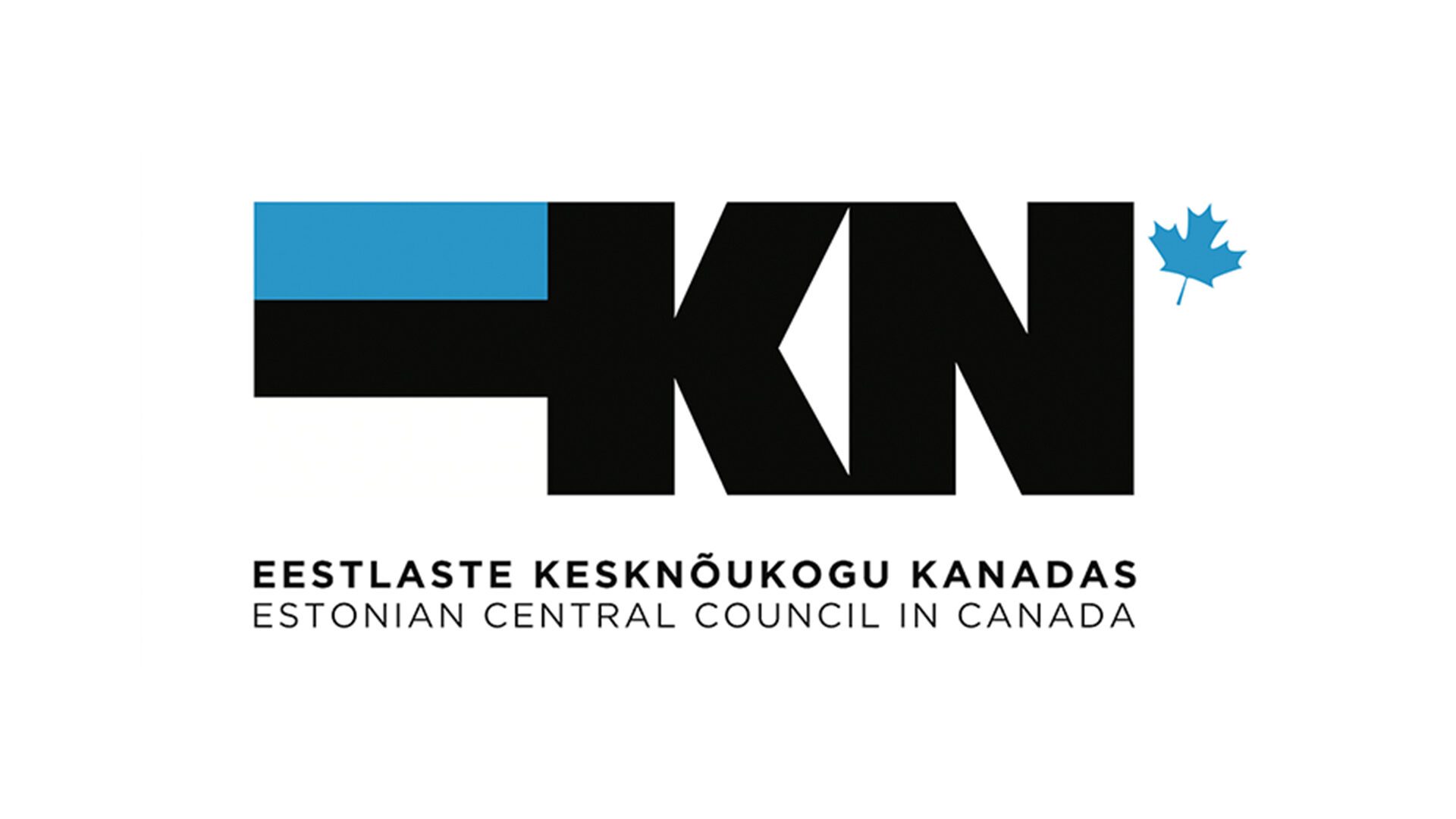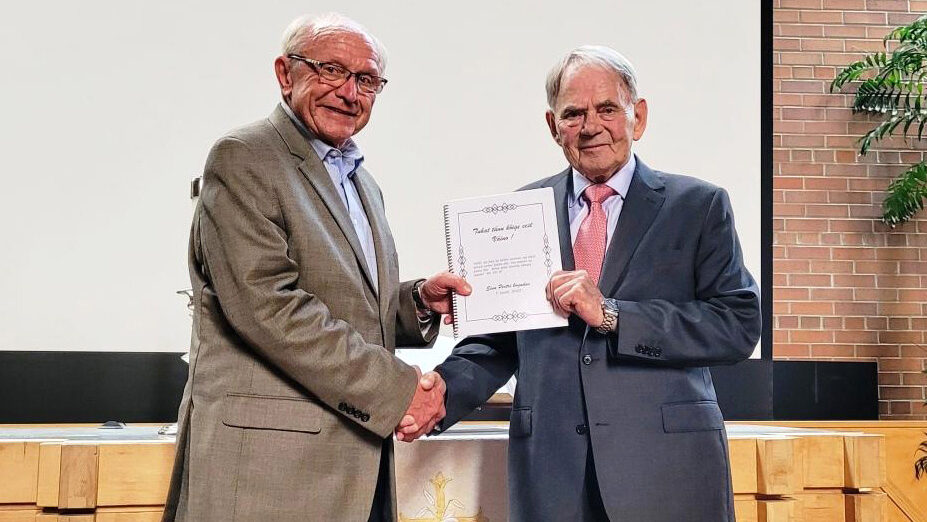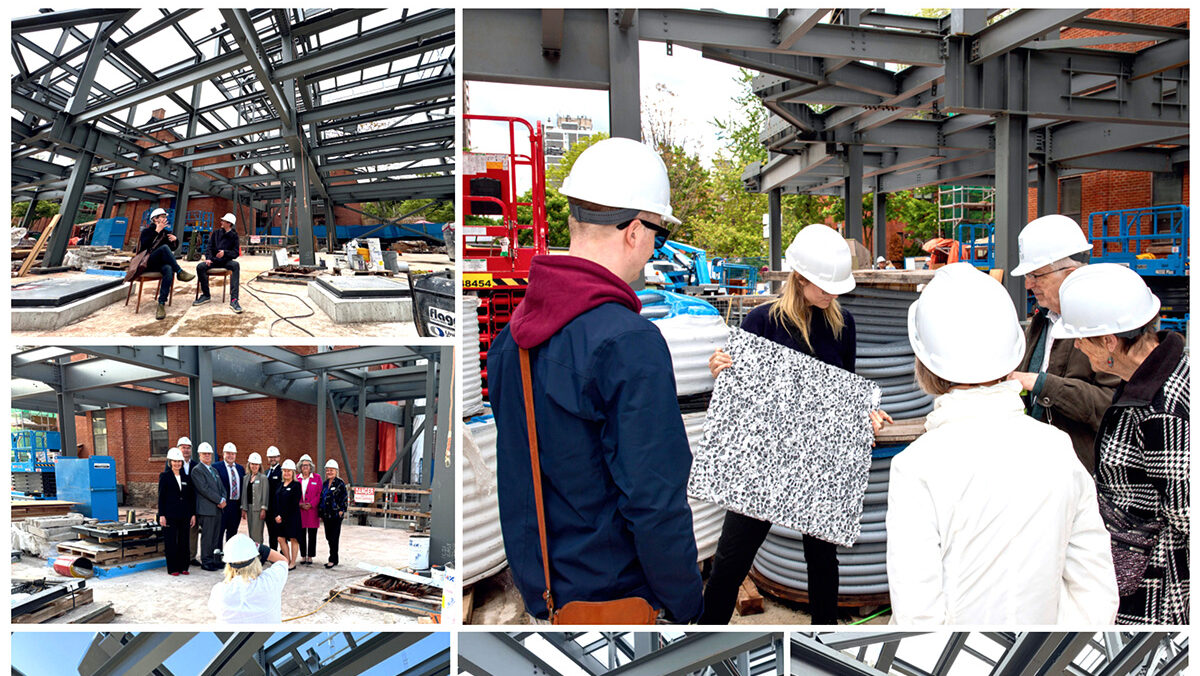This day is usually imbued with a celebratory quality, but on the 104th anniversary, it was somber, with the people of Ukraine in the minds and hearts of Estonians. Words were shared by Kairi Hemingway and Reet Marten Sehr, along with a message from Marcus Kolga.
Look within the huddle, and you could say to someone that we were in Estonia. Look to the side, however, to the containers of Tim Hortons coffee and Timbits that accompanied the crisp, cold February morning, and it's clear this was in Canada.
More indicative, though, were the civic buildings looming over the square. On the east side was Old City Hall, completed in 1899. A grand, sandstone, Neo-Romanesque edifice designed by Edward James Lennox. To the north was New City Hall, Finnish architect Viljo Revell's creation, finished in 1965. The building has attracted critics for its cost and design, notably Frank Lloyd Wright, who said “This marks the spot where Toronto fell.” But let's disregard the structures themselves for a moment and consider what they do for people.
Vabariigi Aastapäev events have been held all over the GTA since Estonians arrived here after the Second World War. At Toronto Eesti Maja. At Eesti Kodu. At Suomi Koti. In 1978, celebrations were held on the premises of the University of Toronto. Even when independence was far away, it was remembered on a large scale: in 1968, for the 50th Estonian Independence Day, Estonians in Toronto consumed a 1.3 metre wide kringel that was surrounded by 50 candles.
But it has been this congregating point at Bay and Queen that has put Estonian values and identity at centre stage.
For the Global Estonian Culture Days in 1972, the square held approximately 15,000 people who had just walked through the city's streets demanding freedom for Estonia. They listened to former prime minister John Diefenbaker advocate for standing up to the advances of the Soviet Union and pushing for the rest of the world to be vocal about the occupation. Adding to the visibility at the time, the CBC made a documentary about the festival and broadcasted it on television.
For the first Black Ribbon Day on August 23rd, 1986, thousands came to Nathan Phillips Square, raising the flags of all Soviet-occupied nations and carrying a strand of barbed wire. This latter act was done to symbolize the oppression of these occupied nations. Canadian politicians and dignitaries of all levels have attended Black Ribbon Day thereafter, as people gather to reflect on the atrocities committed by Nazi and Soviet regimes.
Moreover, Lithuanians, Latvians, and Estonians have come together at the square to remember the June 1941 deportations.
Thinking about structures themselves again, though, echoes the purpose of the square. The three arches over the reflecting pool/skating rink at the square have been renamed the Freedom Arches, with a piece of the Berlin Wall forming the base of a plaque below the middle arch. The plaque reads: “The citizens of Toronto dedicate these arches to the millions who struggled including Canadians, to gain and defend freedom and to the tens of millions who suffered and died for the lack of it.”
On other days of the year, the square has accommodated for the significant dates of other national communities in Toronto, with a maximum capacity of 65,000 people. It has provided space for the Indigenous Legacy Gathering, the launch ceremony of the Toronto Caribbean Carnival, free concerts during the Pan American Games, and most recently, the Mega March for Ukraine on February 27th, 2022.
Seeing the streets filled to the brim with thousands of supporters holding flags and signs — not only Ukraine's blue and yellow flag, but signs of support from Hong Kongers to Estonians — was a reminder of how Nathan Phillips Square and the City of Toronto continue to stand as exemplary places where people of all nations can stand together and support each other's cultures, values, and ways of life.
